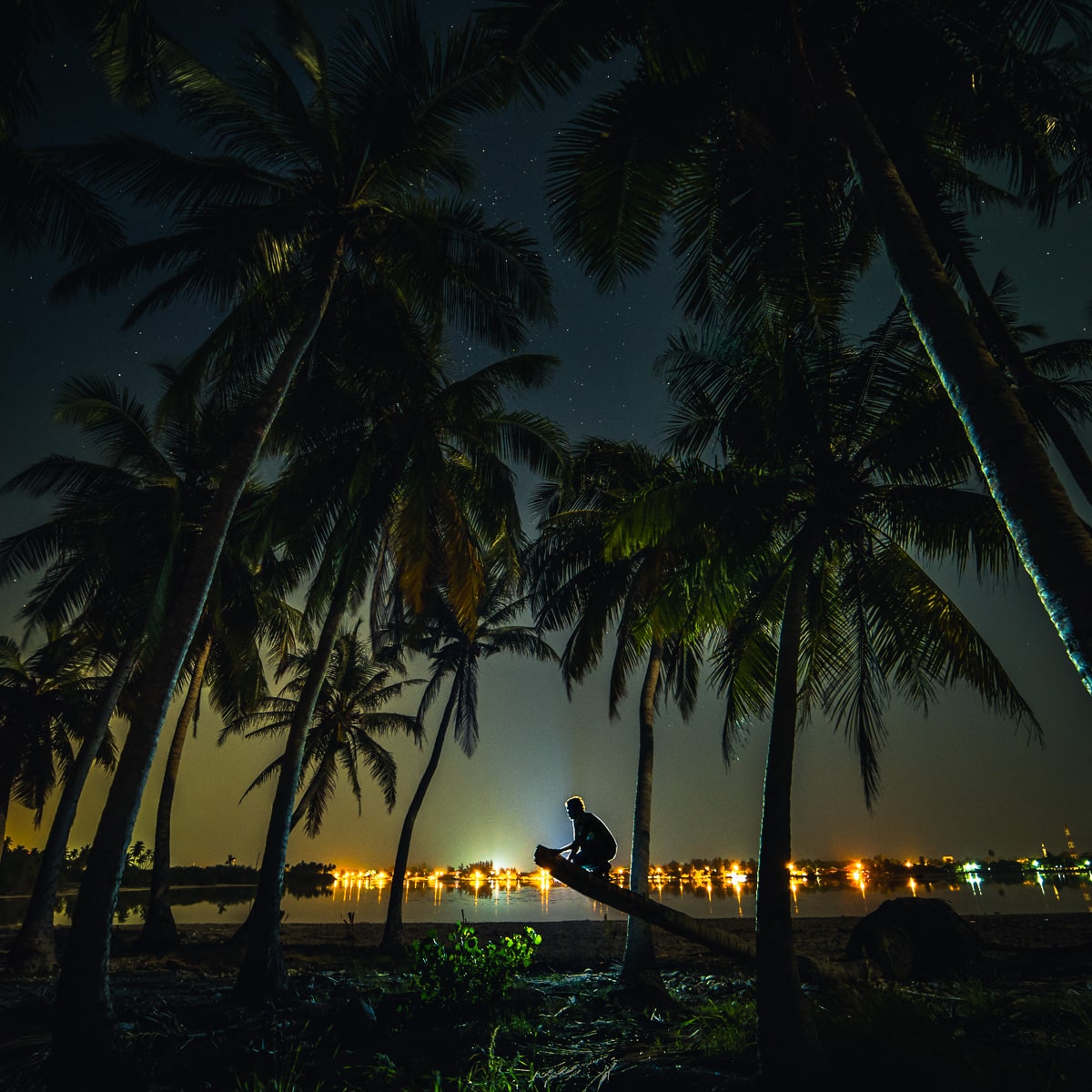Baburu Kudhin

Words by Daniel Bosley; Pictures by Aishath Naj
A winding bike-ride through the paths of the Koattey area in Hithadhoo was an obstacle course of fallen palms, coconut-sized crabs, and coconut-sized coconuts. As we turned off the engine, the orange of the headlight gave way to the blackness of the night.
Our senses began to adjust, and the world slowly resurrected itself into a surreal silver of moonlight. The lights from the link road called us back, across the still water to the right, while the Indian Ocean whispered over to our left.
With the iconic silhouette of the palm trees towering 50 feet above, the last few crabs shuffled (like elephants) for shelter amongst the dry leaf litter. Or, we assumed that’s what the noise was…
Then he was there. The dark figure hunched against the skyline, perched on a fallen trunk. Baburu Kudhin. Watching. Just as suddenly, he was gone.
Baburu kudhin, Baburu Kalo, or Baburu Kujja – which (very) roughly translates as ‘African child’ – is said by some to foreshadow pustulent wounds across the body. Other incarnations are said not to be malevolent, guilty only of startling beach-‘goers’ before scurrying away like his kakuni colleagues in Koattey.
Needless to say, he declined to answer our questions. Actually, we may have forgotten to ask any.
Further theories say Baburu Kudhin is not a spirit at all, but a dwarf-like creature living in the forest. The Dhivehi word ‘baburu‘ may have been used long ago to refer to all foreigners, but today has other less than politically-correct uses. Here, it appears to reference complexion.
Folklore is still a powerful part of island life, despite jinn and evil spirits being quickly forgotten in the glare of the capital city; considered more irrelevant than irrational in an urban island where the lights never go out.
But in the more familiar surrounds of the atolls, they remain alive in hearts, minds, and shadows.

Leave a comment